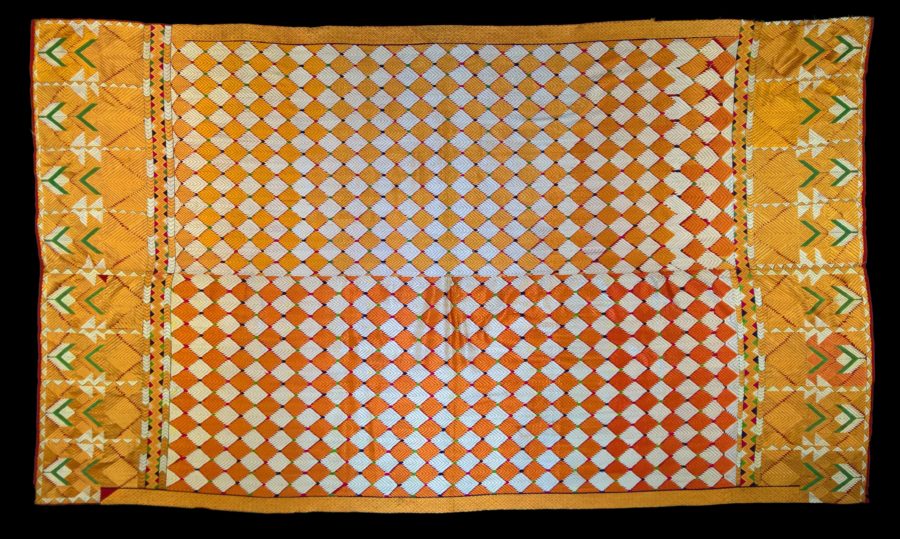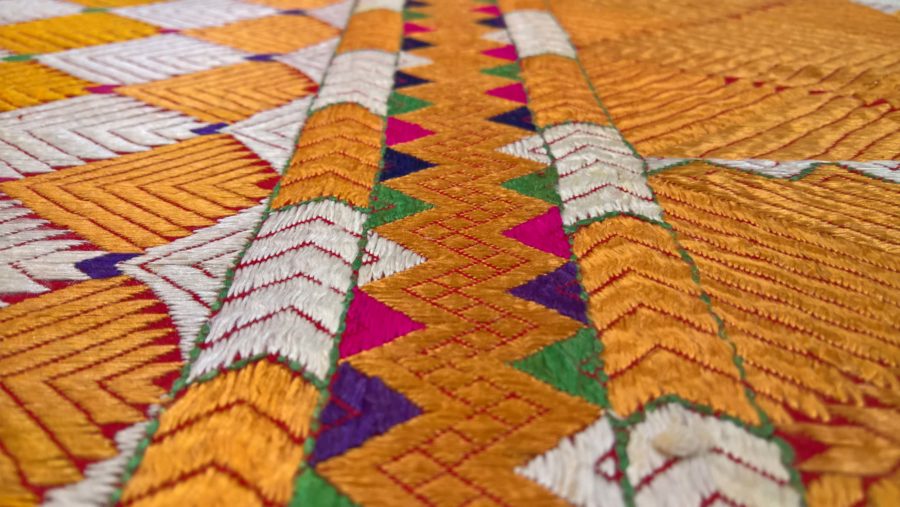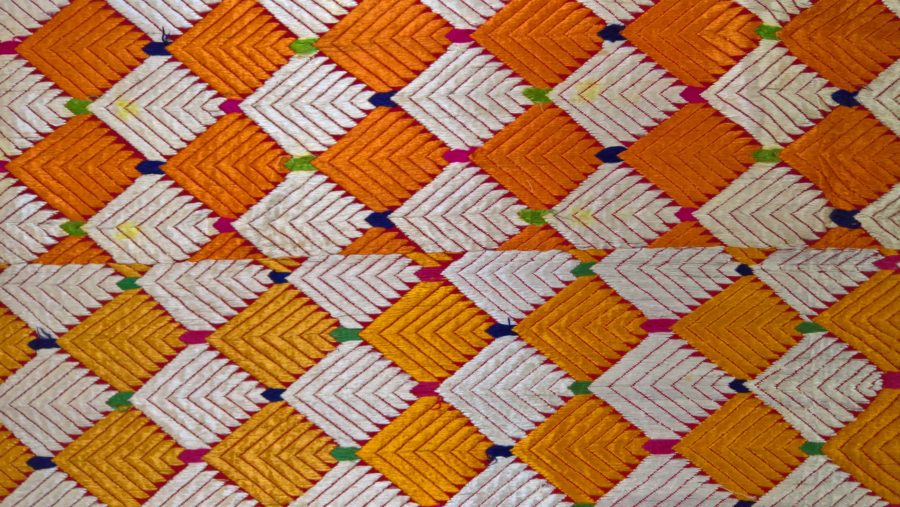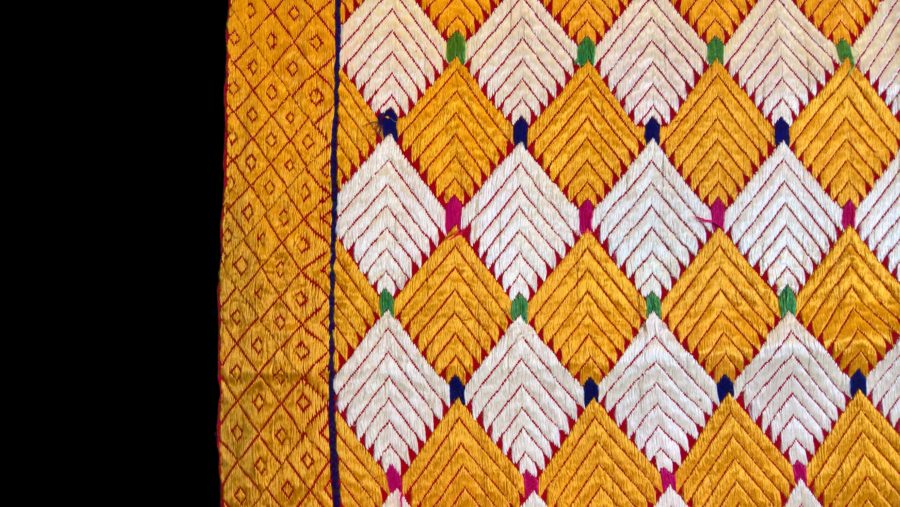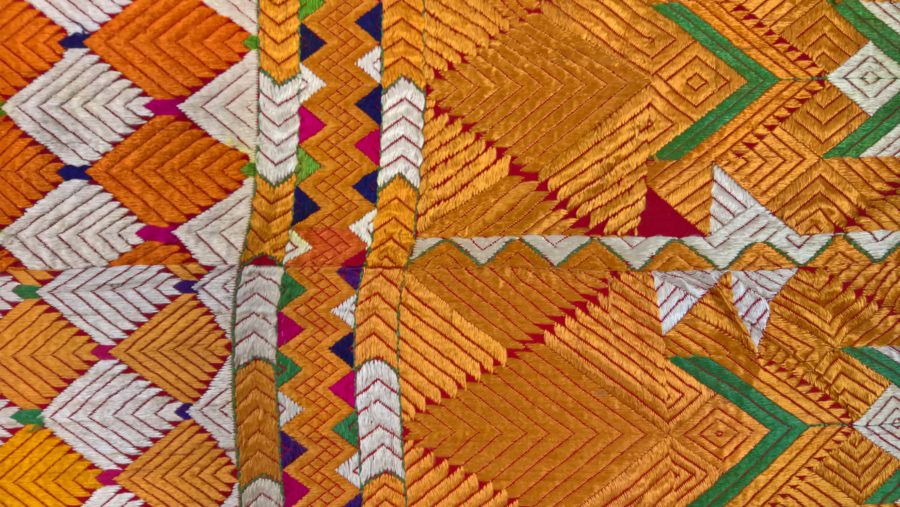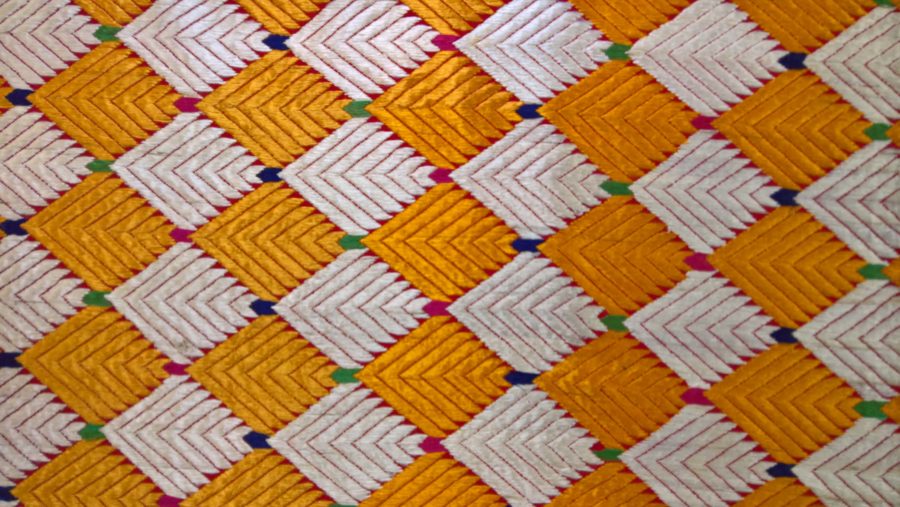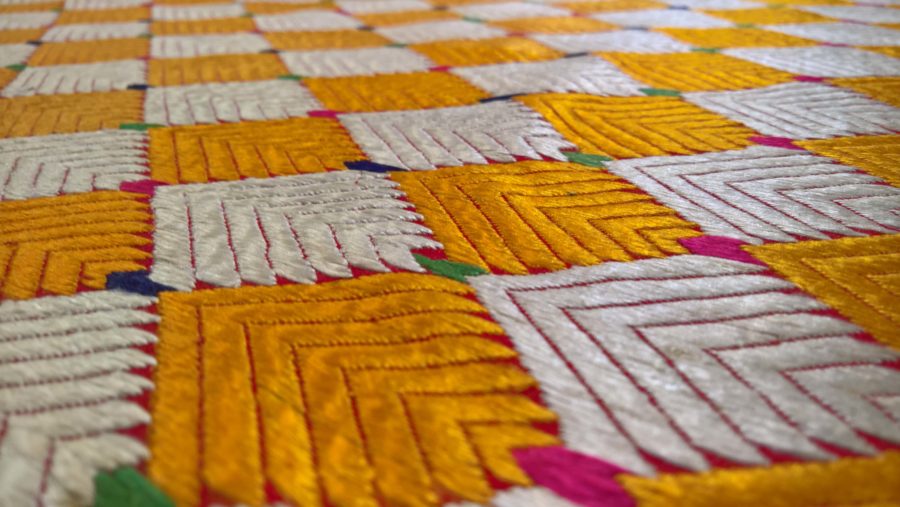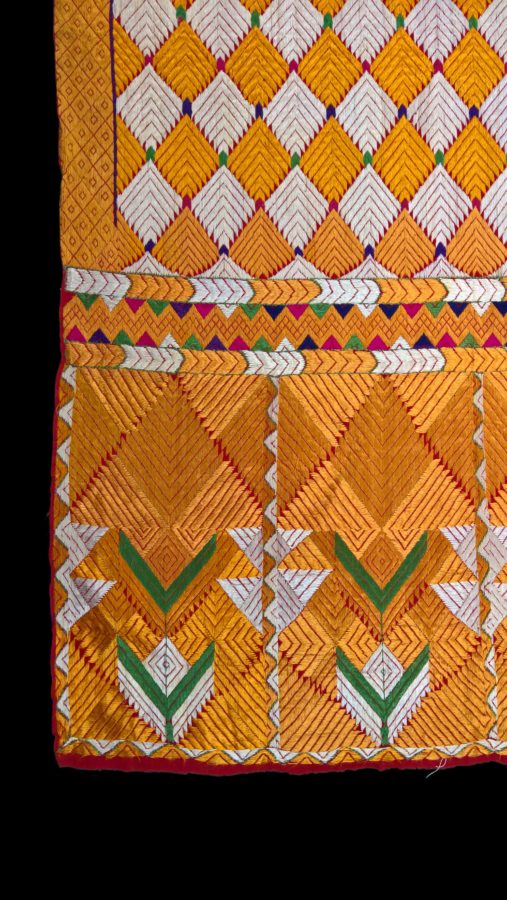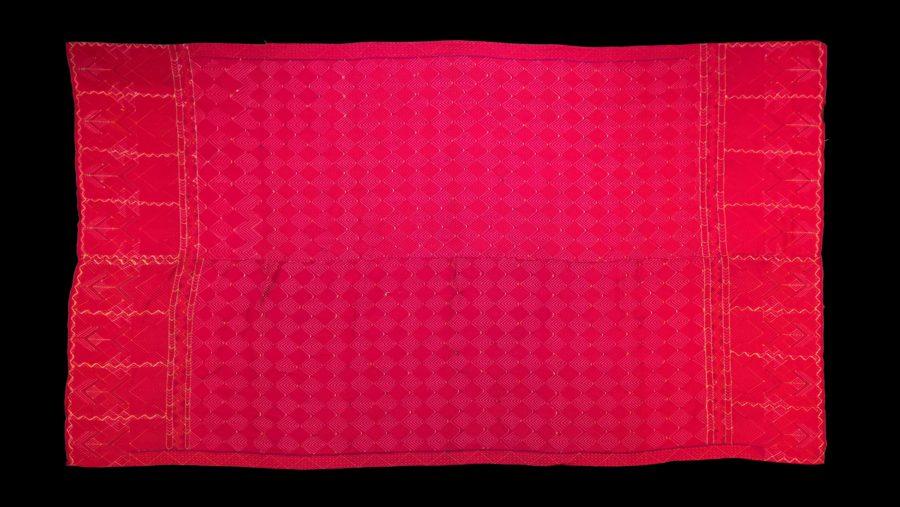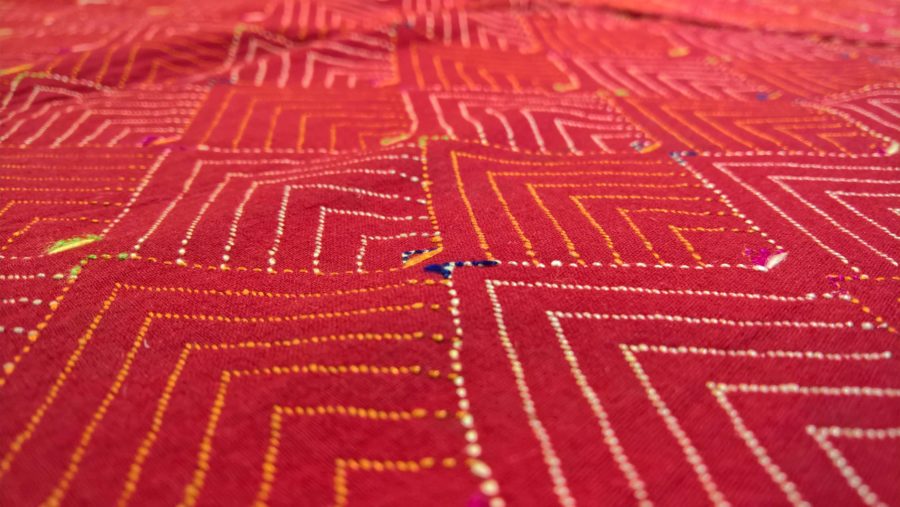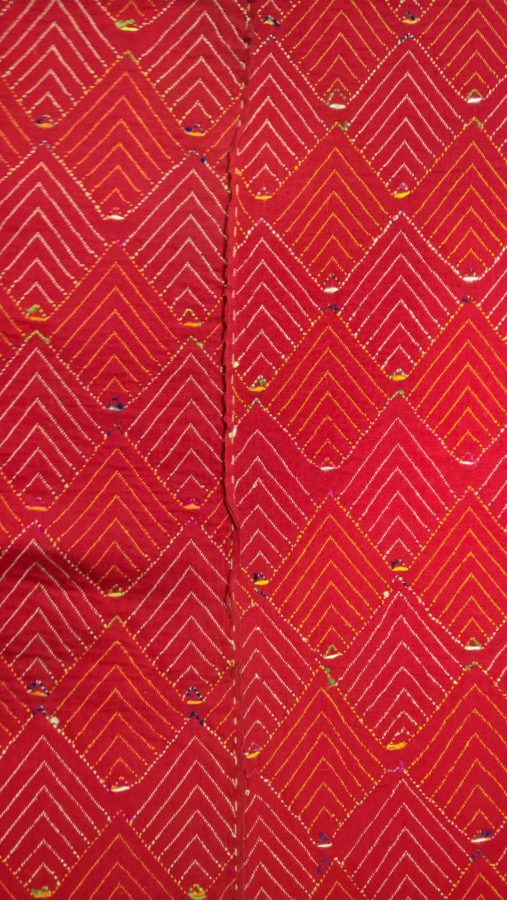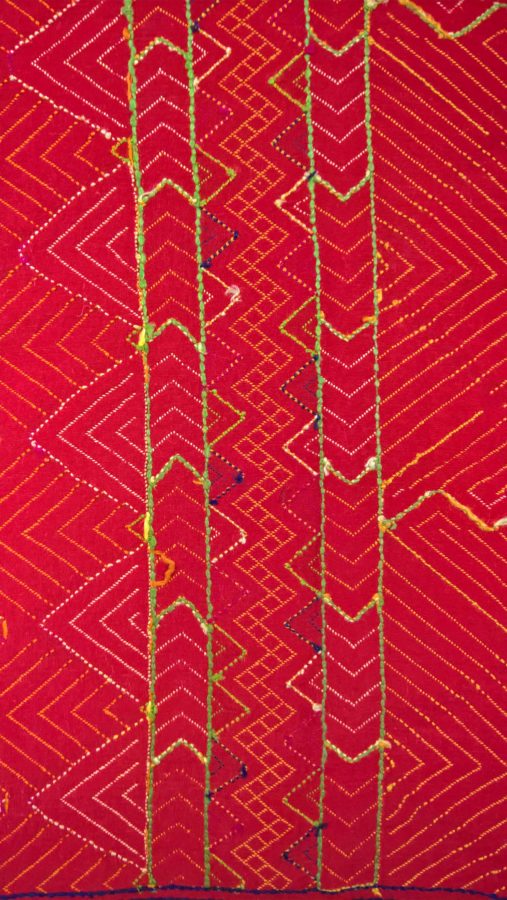This fine textile is from the Sikh regions of the Punjab. It comprises two terracotta-red homespun cotton panels that have been sewn together by hand. The pieces have been densely embroidered with striking, bright, straw-yellow silk threads and silk threads of other colours in various geometric patterns. The embroidery is so dense that the cotton base cloth is barely visible, and as such it is known as a bagh phulkari. ‘Bagh‘ literally means ‘garden’ – a phulkari that is covered with solid embroidery.
Phulkaris were worn by women all over Punjab during marriage festivals and other festive occasions. They tended to be embroidered by women for their own of other family members’ use rather than were bought in the markets. Phulkaris often were presented to brides at the time of marriage.
The textile is in excellent condition and is without repairs, tears or insect damage. It is bright and robust.

Related phulkaris shown in March 2017 at the Brunei Gallery, SOAS, London, as part of the ‘Embroidered Tales and Woven Dreams’ exhibition.
References
Aryan, S. & B.N. Ayran, Unknown Masterpieces of Indian Folk and Tribal Art, KC Aryan’s Home of Folk Art, 2nd & enlarged ed., 2016.
Mason, D. (ed.), Phulkari: The Embroidered Textiles of Punjab from the Jill and Sheldon Bonovitz Collection, Philadelphia Museum of Art/Yale University Press, 2017.


